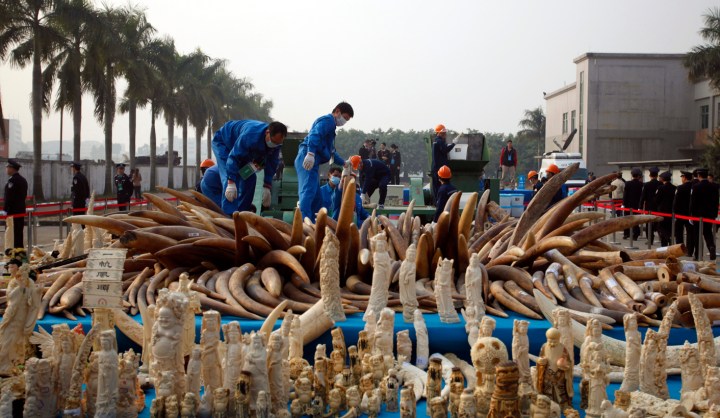World
Hong Kong to destroy one of the world’s largest stockpiles of ivory

Following mainland China’s recent destruction of six tons of illegal ivory, Hong Kong has announced a commitment to destroy 27 of its estimated 33 tons of ivory stocks. This is one of the largest stocks in the world, and the destruction could send a clear message to consumers that ivory is an untouchable product. BY ADAM CRUISE.
In a press release last Thursday, Hong Kong’s Endangered Species Advisory Committee confirmed that apart from a small amount of ivory being saved for ‘educational purposes’, all illegal stocks of ivory held by Hong Kong will be destroyed over a one- to two- year period. The first destruction will take place in the first half of this year.
The vote for the destruction was unanimous and the committee considered that the costs of security and the management burden associated with monitoring the stockpile was too great to continue and destruction was the only viable option.
With Hong Kong being a major destination country as well as a transit country, its decision has major implications for the fight against the plague of illegal ivory trading and elephant poaching. It also throws down the gauntlet to other countries, especially Tanzania, who has seen its elephant populations decimated in the last five years. Tanzania also sits on a massive stockpile of illegal ivory.
Globally, the amount of ivory seized by various countries in 2013 was over 44 tons, said to be the highest in over 25 years.
Katarzyna Nowak, affiliated with the Evolutionary Anthropology Research Group at Durham University, points out that the Hong Kong destruction of 27 tons “represents a mere 9% of the estimated global volume seized between 1996 and 2011.” It is hoped now that other countries will follow Hong Kong, China, the Philippines, USA, Ghana and Kenya in destroying their stockpiles.
Nonetheless, Nowak is upbeat about Hong Kong’s decision, saying that it is a “move in the right direction”. “Destruction of stocks addresses ivory demand in a way that catching ivory traffickers does not,” she maintains. “It suggests the problem lies not just with smugglers, but with all those who desire the smuggled commodity, and that the government will tolerate neither. Publicly destroying stockpiles has the potential to change attitudes and perhaps the plight of elephants for the better. It contributes to the momentum required to resolve the current poaching crisis.”
Nowak further argues that the destruction of the stockpile will “also remove all likelihood that any of those 27 tons will end up on the black market.”
She adds: “In other words, by destroying ivory, a country acknowledges that it isn’t legitimate and prevents leakage. Maintaining stockpiles may contribute to ambiguity over the legal status of ivory. It can also give the impression that contraband ivory is a legitimate commodity to be speculated on – an asset worth keeping hold of. Destruction, rather than storage, circumvents controversy of inciting ‘ivory worship’, such as when Sri Lankan authorities considered transferring poached tusks trafficked from Kenya to a Buddhist temple last year.”
Phyllis Lee, Director of Science for the Amboseli Trust for Elephants, sums up the implications of Hong Kong’s proposed move. She states that the proposed incineration of the ivory will “send a clear and important signal about the transient nature of this commodity, about the ease with which it goes from ‘white gold’ to dust. It should also give consumers a clear signal about what it is that they are consuming – mere dentine, cementum and death, not jewels or actual gold. The more we see of such public and high profile acts, the more we can hope that the ivory consumers of the world will rein in their insatiable demand and leave their grandchildren some of these magnificent animals roaming the earth.” DM
Adam Cruise is a published author specialising in Africa, Europe and its environment. Adam works with Conservation Action Trust
Photo: Workers destroy confiscated ivory and ivory sculptures in Dongguan, Guangdong province January 6, 2014. China crushed 6.2 tonnes of confiscated ivory on Monday in the first such public destruction of any part of its stockpile, after the country’s fitful enforcement efforts led experts to question its commitment to stamping out smuggling. REUTERS/Alex Lee




















 Become an Insider
Become an Insider